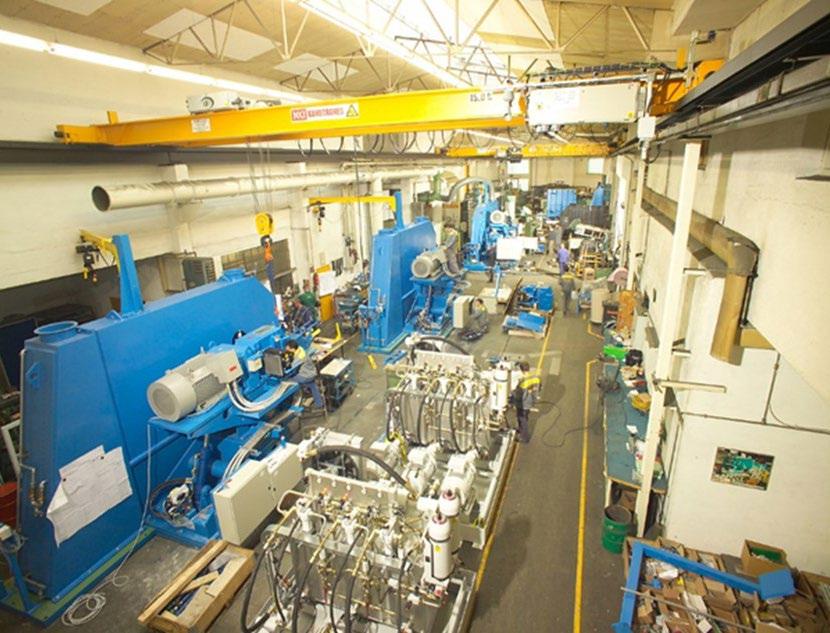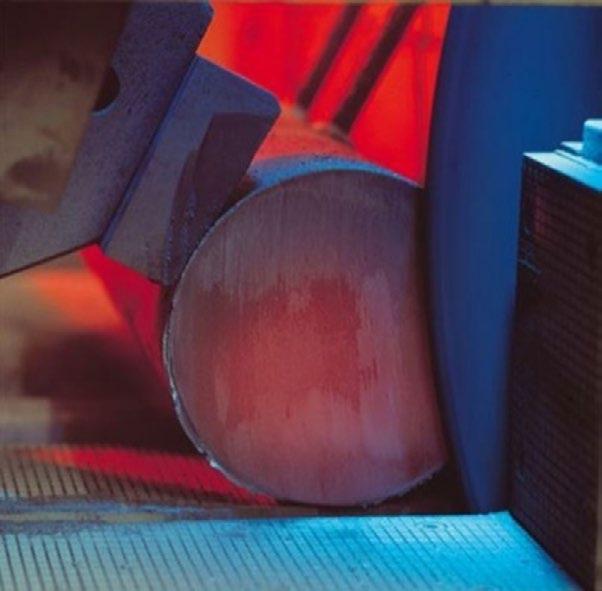
11 minute read
Abrasive cut-off machines in modern rolling mills
edited by: N. Asamer, S. Purrer
Abrasive cutting is the ideal cutting technology to increase the throughput capacity as well as the flexibility of hot rolling mills, mainly for long but also for flat products. The highest degree of automation reduced overall running costs and in particular an improved quality of the rolled products are as well substantial advantages of abrasive cutoff machines compared to conventional cutting techniques. For that reason, modern rolling mills, for SBQ products, are equipped with abrasive cut-off machines. During recent years, also numerous existing rolling mills have been upgraded by retrofitting abrasive cut-off machines. To achieve best possible results, however, it is essential that the abrasive cut-off machines used are specifically designed and perfectly tuned to the individual application. Taking largescale projects recently executed by BRAUN as examples, the concepts how the requirements of rolling mill equipment and rolled product are met are described.
Requirements For Cutting Of Sbq Products
To respond to the increasingly demanding requirements of their customers and to remain competitive on the market, the steel mills have been facing pressure to adapt their operation procedures and production facilities to meet the most stringent criteria regarding product costs (to be as low as possible), production flexibility (as high as possible) and especially product quality (as high and reliable as possible). This also concerns the rolling operations as one of the main processes in the steel industry.
Apart from other specific requirements, such as e.g., a homogeneous material structure, uniform mechani-cal properties and a perfectly shaped cross section of the rolled product, etc., accurately cut bar ends are essential for the production of value-added products, such as SBQ (special bar quality) which are more and more demanded by the market, especially by the automotive industry as one of the steel industry’s most important customer groups.
Friction saws (with metallic saw blades), shears and torches are conventional techniques to perform the cutting jobs in rolling mills. Considering the aforementioned demands from the market, however, the disad-vantages associated with these cutting methods – poor cutting quality that requires deburring or even addi-tional cutting afterwards, need for extensive maintenance, high energy consumption, noise, low flexibility regarding changes in the product mix of the mill, etc. – have become less and less tolerable. To produce SBQ, these conventional cutting techniques are not suitable at all.
Key Features And Advantages Of The Abrasive Cutting Technology
In contrast to that, abrasive cutting has become the state-of-the-art cutting technology for the production of top-quality, value-added bar products. It meets the requirements of the market and the needs of the steel industry to the largest extent. In particular, abrasive cutting features the following substantial advantages: An excellent quality of the cut surface can be reliably achieved (thanks to the consistent self-sharpening of the cutting wheel): the cuts are straight, precise, and bright, without hardening of the cut surface. Thus, subsequent machining processes to adjust the material ends (e.g., deburring, edge trimming, etc.) can be eliminated.
Fig.1 - Hot abrasive cutting.
All other cutting methods result in a more or less bad cutting surface - partly with brisk, adhering burr (friction saw), partly with distorted, uneven surfaces (torch cutting) or with deformation of the material ends (shear). That either requires additional refining of the cut product (such as deburring) or otherwise com-promises the quality of the rolled product. That, however, means - in the first case - additional costs or - in the other case - a devaluation of the product. Furthermore, with increasing wear of the saw blade or the shear knife, the quality of the cut gets even worse, whereas abrasive cutting ensures a consistently good cutting quality over the whole service life of the cutting wheel.
Abrasive cutting is suitable for an extremely wide range of different kinds and grades of materials - not only for high-alloyed steels, special alloys or nickel-base metals. Also, carbon steels and low-alloyed structural steels can be perfectly cut with an abrasive cut-off machine and can then be used for special purposes and sold as value-added products, e. g. as automotive steels or engineering steels.
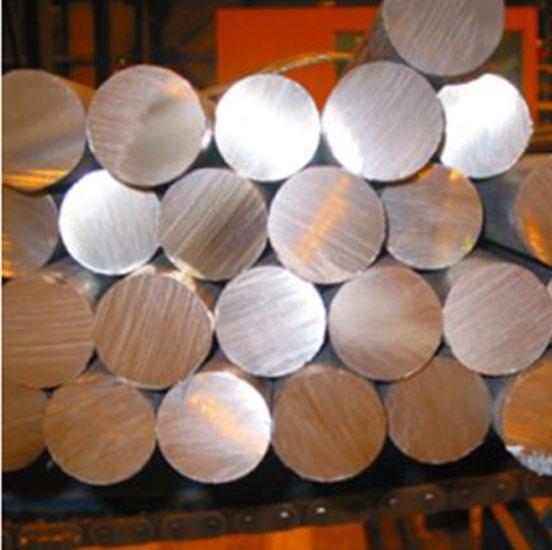

Whereas a friction saw has its limitations at higher material temperatures and at higher alloyed, harder materials, a shear is of no use for cutting of cooled down materials or for cutting of bigger material cross sections. Abrasive cutting, however, is equally suitable for cutting cold, warm or hot materials and repre-sents a real universal cutting process. This is of special importance for hot rolling mills where interruptions in the operation of the mill with the rolled products cooling down are likely to happen.
Abrasive cutting is a high-performance stock removal process. Thanks to a high abrasion rate, abrasive cutting enables rapid cutting times. Only shearing is faster - but has significant disadvantages indicated above.
Unlike friction sawing, abrasive cutting is a dry cutting process. No liquid coolant needs to be applied. Thus, wastewater recycling or cleaning of polluted coolant is not necessary.
Furthermore, abrasive cutting is equally suitable for cutting cold, warm, or hot materials. Therefore, it rep-resents a real universal cutting process. This is of special importance for hot rolling mills where interrup-tions of the mill operation causing the rolled products cooling down are likely to happen.
Fig.4 - Efficient cutting rates in relation to material temperature and dimension.

For cutting layers of bars right after the cooling bed, the material temperature lays usually in the range between abt. 100 and 500 °C, i.e., cold or warm cutting, depending on the diameters of the rolled bars and on the actual rolling operation. As shown in Fig. 4, cutting at higher material temperatures is of advantage (even faster cutting - but also increased service life of the cutting wheel).
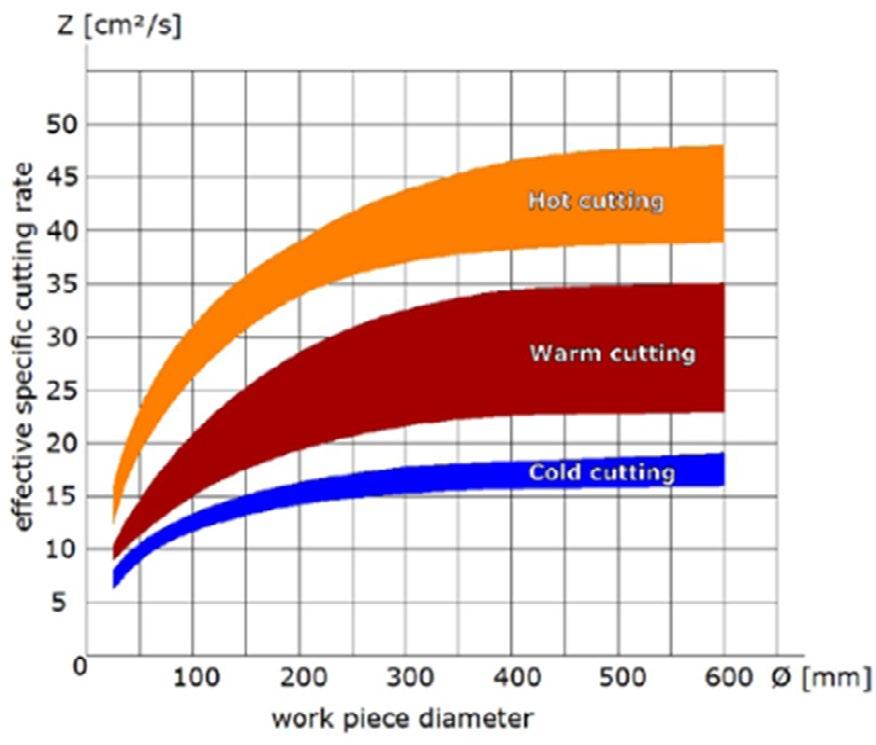
Since well-designed abrasive cut-off machines allow changing worn cutting wheels against new ones within shortest times (depending on the wheel size within 3 to 5 minutes), they are ideal cutting facilities for continuous production processes and are operated fullyautomatically. The proper cutting program can be selected automatically according to the actual product data and cutting requirements out of cut-off ma-chine’s PLC.
Basic Technological Concept And Machine Design
Depending on the cutting application in the rolling mill, the following cutting principles are typically applied:
Chop stroke cutting
The cutting wheel is moved to the material in a chopping motion with a radial infeed into the workpiece. Generally, this principle is used for cutting of single round, squared or nearly squared cross sections. With a properly designed cut-off machine, also rectangular parts or narrow layers of workpieces can be cut.
Traverse cutting
The cutting wheel is moved horizontally across the material, in a single cutting stroke. This principle is used for cutting wider layers of round, squared, and nearly squared cross sections, ingots, billets, but also flat products such as rectangular slabs, plates, or sheets.
Fig.5 - Chop-stroke cutting principle.
The cutting principle applied for a certain application is also reflected in the basic design of the abrasive cut-off machine. Altogether, BRAUN has developed five different basic machine designs. Four of them are widely used in rolling mills, for the major applications described in the following.
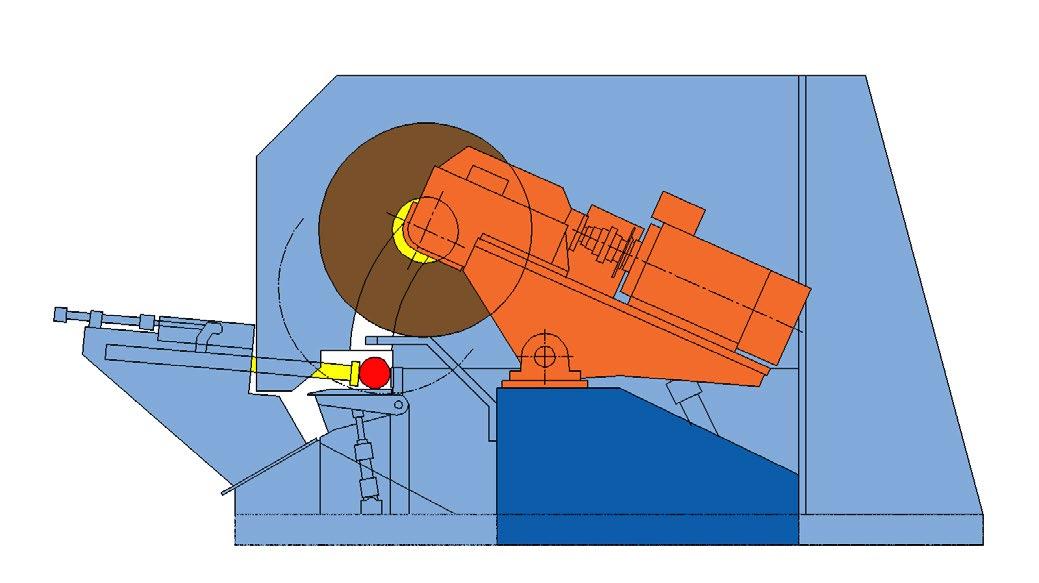
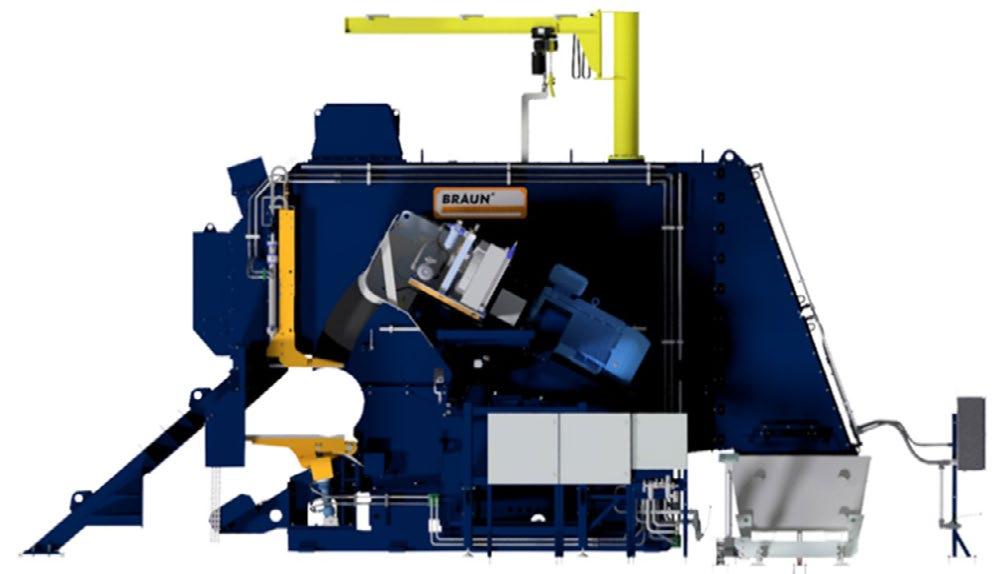
Fig.6 - Traverse cutting principle.

ABRASIVE CUTTING OF SLABS, BLOOMS, BILLETS OR HEAVY BARS
In primary rolling mills, the heavy bars, billets, blooms - or sometimes also slabs - are cut in hot condition. Predominantly, the cross sections of the work pieces are still quite large. Therefore, chop-stroke cutting is the preferred method for cutting these materials as single pieces. Due to the material sizes to be cut, cut-ting wheel diameters typically range from 1 250 to 1 800 mm.
Ideally, the abrasive cut-off machine is equipped with a horizontal rocker, like machine type W. The infeed motion of the cutting wheel goes downwards which has the significant advantage that also rectangular work pieces can be cut with an optimum utilization of the cutting wheel. Somewhat smaller billets can be cut as narrow layers of 2 or 3 pieces. This allows to keep the throughput capacity at a high level also for smaller cross sections. To prevent round work pieces from overlapping, vertical top clamps are added to the material clamping system.
Fig.8 - Abrasive cut-off machine, type TS 16 W, for hot cutting of heavy bars (Acciaierie Valbruna Bolzano, Italy)
For downstream processes, abrasive cutting of the hot materials provide clear advantages. Thanks to the smooth, clean cutting surface, stamping, marking, or labelling of the material faces are eased. Also billet grinding can be done with less problems since abrasive cutting avoids the thick burrs resulting from saw-ing or flame cutting, as well as the deformations of the material ends (“noses”) resulting from shearing.
Abrasive Cutting Of Rails And Sections

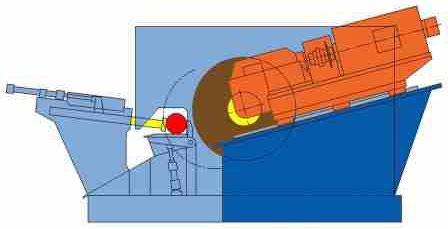
Compared to the type W, machine type L has the advantage of a somewhat higher accuracy for the cutting process due to linear cutting motion and a very stable and rigid base frame of special vibration-damping design.
Fig.9 - Abrasive cut-off machine, type TS 16 W, for hot cutting of heavy bars (Acciaierie Valbruna Bolzano, Italy).
Fig.10 - Abrasive cut-off machine, type TS 16 L, for hot cutting of rails in rail rolling mill, for crop cutting of rails (voestalpine Rail Technology, Donawitz, Austria).
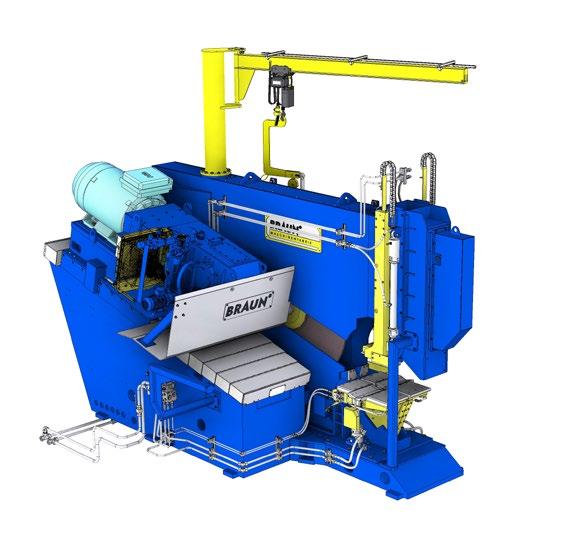
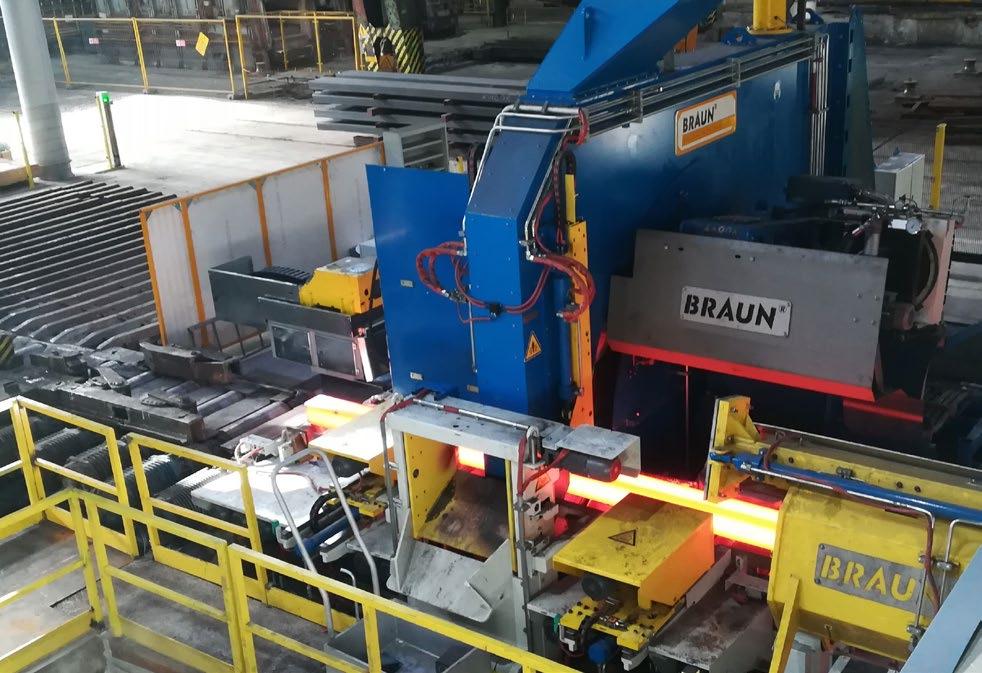
Traditionally, friction saws have been used for the hot cutting of rails in rolling mills. voestalpine Rail Technology, however, a technology leader in rail production, decided to try abrasive cutting instead and - at firstprovisionally modified their saw into an abrasive cut off machine themselves. The cutting results with an abrasive wheel were much better compared to a metallic friction saw blade - but not as high as expected. The advantages of abrasive cutting, however, were recognized. Meanwhile, this cut-off machine has been in operation for more than one year and the customer is highly satisfied. With one cutting wheel having a starting diameter of 1 600 mm, 2 500 – 3 000 cuts can be reached – a drastic reduction of cutting costs compared to before.
Abrasive Cutting Of Bars Or Sections In Layers
Fig.11 - Abrasive cut-off machine, type TS 16 W, for hot cutting of heavy bars (Acciaierie Valbruna Bolzano, Italy). .
After the last rolling pass, the rolled bars or sections already have the final shape. The work pieces are usually still quite long when they are transferred onto the cooling bed. All what has been left after passing the cooling bed is to cut the bars or sections in warm condition to their final lengths before bundling. To meet the throughput requirements of the mill - despite the already relatively small material cross sections -, the products are cut in wider layers by means of traverse cutting. Depending on the actual sizes of the work pieces, typical cutting wheel diameters are between 800 and 1 600 mm.
For the horizontal cutting motion, the traverse cut-off machine comprises a linear-guided travel slide. On this slide, the cutting rocker is mounted. The actual cutting infeed is performed by the horizontal slide. The purpose of the rocker is the adjustment of its tilting angle in accordance with the diameter of the cutting wheel getting smaller after each cut, as well as the upswing of the cutting wheel once the traverse cut has been completed so that the travel slide can return to its starting position without blocking the layer of bars or sections on the roller table. Machine type F represents the typical design of a traverse abrasive cut-off machine. It allows the cutting of up to abt. 1 300 mm wide layers of bars or sections.
Especially for this application, it is imperative to achieve a good quality of the cut surface. If the cutting quality is insufficient, as it is mostly the case with a shear, the bar ends must be trimmed or cut once again with a separate cutting facility (a band saw for commercial material grades or an abrasive cut-off machine for more special materials, respectively for a wide range of material grades) at a later stage - either by the steel mill or by its customers.
Due to this fact, more and more steel mills have chosen to install traverse abrasive cut-off machines even in existing rolling mills - either in addition to an existing shear or to replace a shear
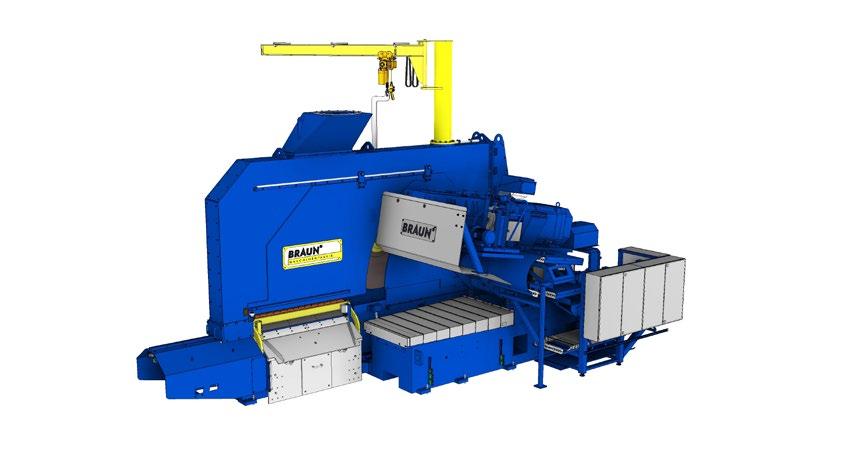
Fig.12 - Traverse cut-off machine, type TS 16 F for warm cutting of bars in layers (SIDENOR Basauri, Spain).
ABRASIVE CUTTING OF EXTRA WIDE LAYERS OF BARS OR SECTIONS (AS WELL AS WIDE SLABS, PLATES OR SHEETS)
For cutting extra wide layers of bars or sections (over abt. 1 300 mm), a gantry-type traverse abrasive cut-off machine, type FP is the right solution. The horizontal travel slide with the rocker is moved overhead, in linear guides mounted onto a sturdy gantry structure. This design avoids that the rocker protrudes too wide (as it would be the case with the “standard” traverse abrasive cut-off machine, type F, if the layer with exceeded abt. 1 300 mm) and ensures a stable, accurate horizontal cut.

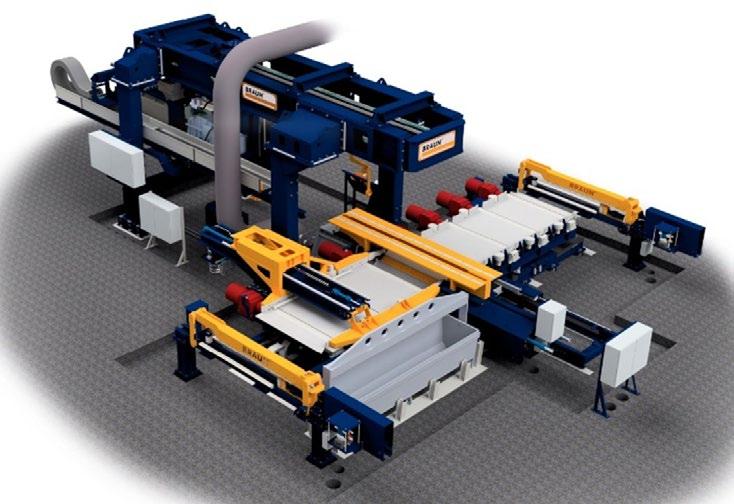
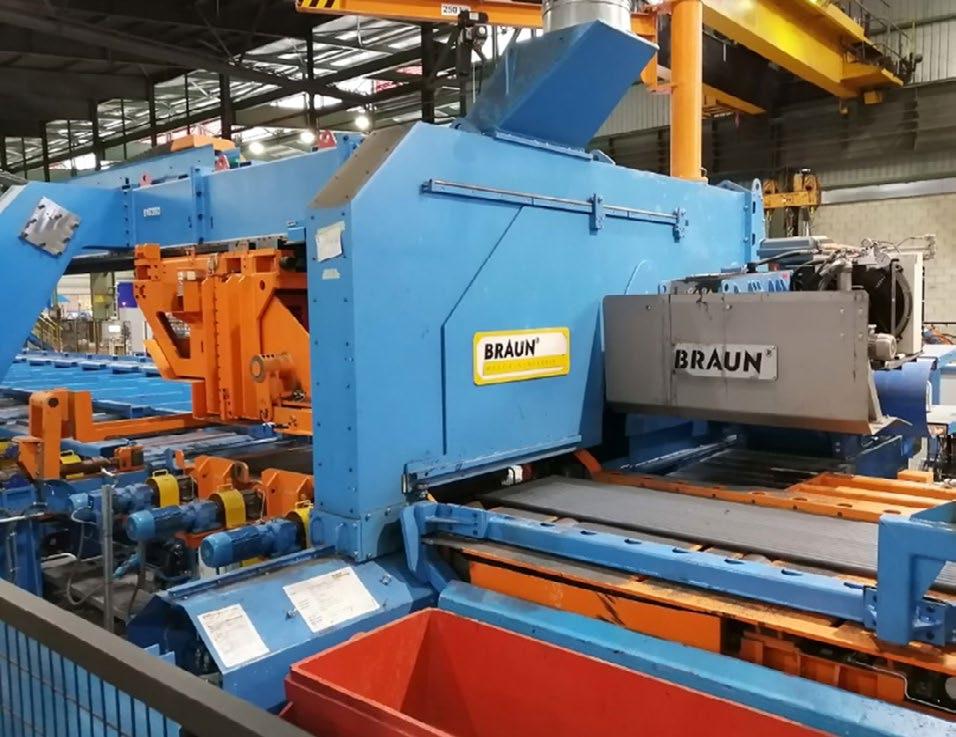
Fig.14 - Gantry-type traverse abrasive cut-off machines, type TS 12 FP, for warm cutting of up to 1600 mm wide layers of bars (SHIGANG, Shijiazhuang, China).
The same machine type FP can also be used for cutting wide slabs, plates or sheets. The first installation of this kind was done at BÖHLER Bleche, Austria. As part of an overall modernization project of their plate mill, they were searching for a cutting technology that should replace the existing shear. This shear was causing problems and was also not able any more to meet the increased quality requirements. Already cut ends had to be trim cut again in cold condition by means of bandsaws in the plate conditioning shop. The task was to eliminate this additional manipulation of the plates and to cut the overall production costs. After a comparison of all viable cutting methods, they decided in favour of the abrasive cutting technology. The gantry-type traverse abrasive cut-off machine, type TS 12 FP supplied by BRAUN is designed for the cutting of up to 2 300 mm wide hot-rolled plates and sheets in hot condition. Additionally, cold slabs are also cut with this machine into shorter pieces – for this purpose, the cut-off machine had to be equipped with a specifically designed material clamping device with individually actuated, selfadjusting clamping elements, for safely clamping the slabs despite their slightly rounded surfaces.
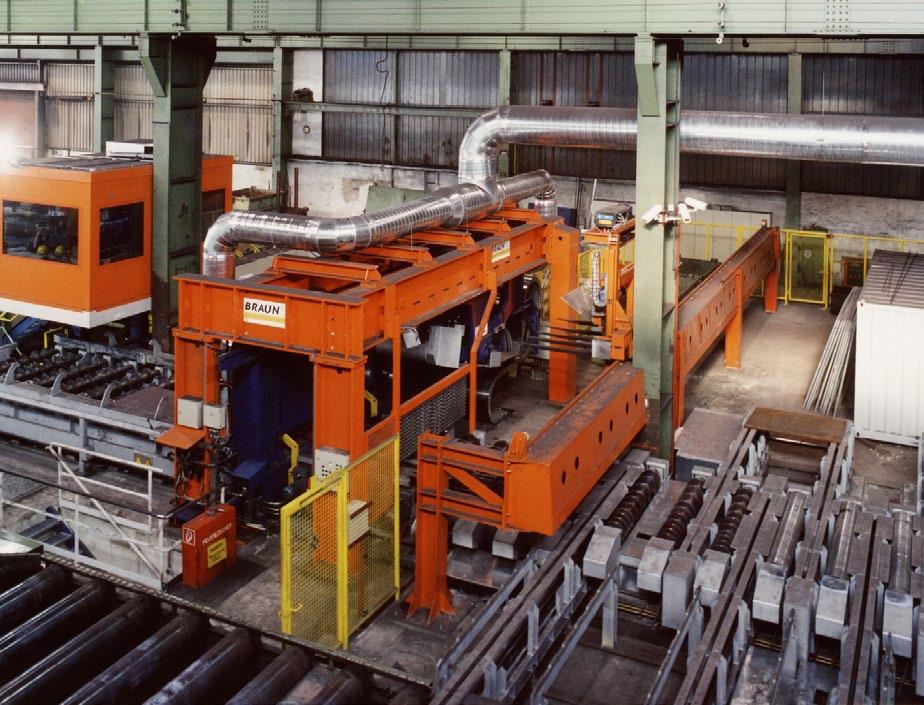
Fig.15 - Gantry-type traverse abrasive cut-off machine, type TS 12 FP, for hot cutting of plates and sheets as well as cold cutting of slabs (BÖHLER Bleche, Austria).
Special Requirements On Machine Design
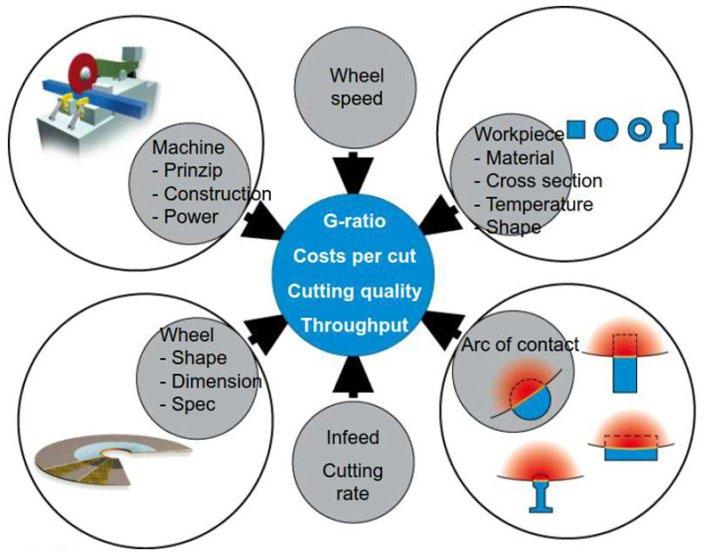
As described above, abrasive cutting is the state-of-theart technology for a wide range of cutting applica-tions in hot rolling mills, both for cutting of long and flat products. Abrasive cut-off machines are also an ideal tool to upgrade existing rolling mills and to improve product quality and mill performance.
To achieve optimum results, however, it is essential that the abrasive cut-off machine utilized for a specific application is properly designed.
Fig.16 -The “cutting system” (courtesy of Tyrolit).
The abrasive cut-off machine is one of BRAUN’s main products. Therefore, it enjoys an extremely high priority within BRAUN’s company policy. Thanks to more than 55 years’ experience, ongoing research, and development, as well as a close collaboration with the leading of cutting wheel manufacturers, BRAUN has been able to establish an extensive know how for being in the position to offer stateof-the-art machine designs to the customers, perfectly tuned to their specific applications.
Conclusion And Outlook
Due to the increasingly competitive market environment, the steel mills will remain under consistent pres-sure to further improve their production facilities. Even though the various cutting processes at different stages during rolling operations are still widely regarded as minor processes, it has become evident that cutting does indeed have a substantial impact on the performance of the mill, on the quality of the final products and on the overall production costs.
Fig.17 -Pre-assembly and functional test of cut-off machines prior to shipment.
Nowadays, most of the modern hot rolling mills are equipped with abrasive cut-off machines from the very beginning. During recent years, more and more abrasive cut-off machines have also been retrofitted to existing rolling mills. Due to the many advantages of the abrasive cutting technology versus other, conven-tional cutting methods (as described in the above paper), this trend will continue. In particular the imple-mentation of an abrasive cut-off machine in an existing mill, however, does require specialist know how.
